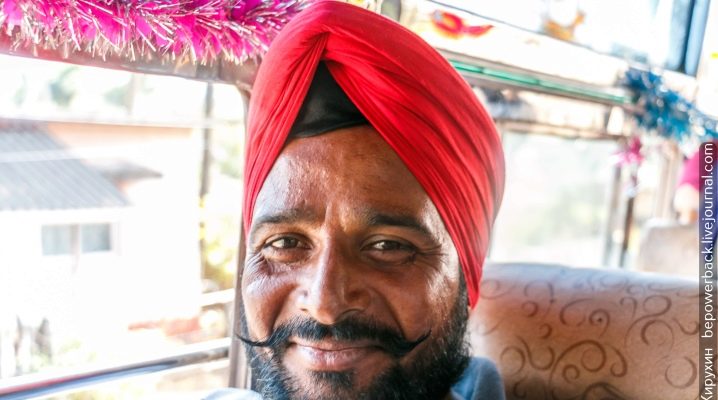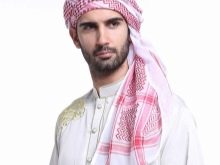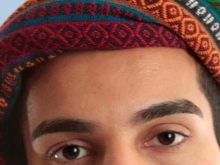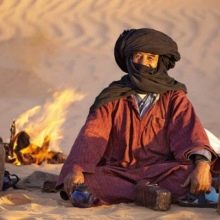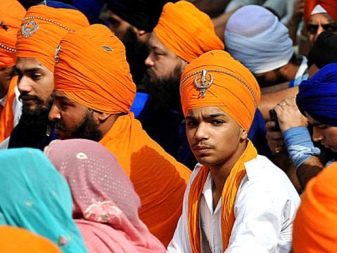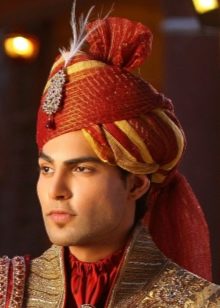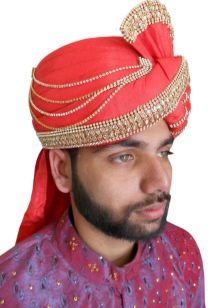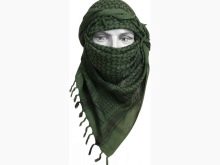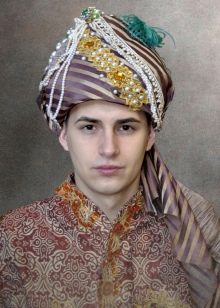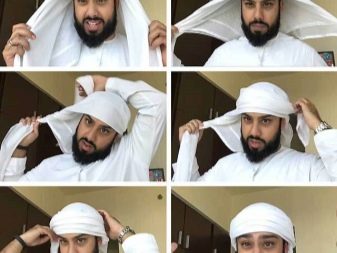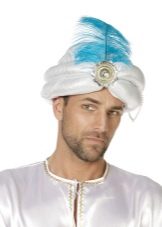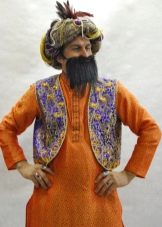How to tie a men's turban and what to wear with it?
There are a huge number of types of hats today. Some of them appeared recently, and some have existed for many centuries, such as the men's turban. What it is, what types it has and how to wear it correctly, and will be discussed in this article.
Description of the headdress
A turban, or as it is also called "turban", is a traditional men's headdress. It appeared more than 600 years ago, and was originally worn by men professing Islam.
Many years later, the turban became widespread throughout the world - the inhabitants of Asia and India began to consider it their classic headdress., and in Europe it gained popularity thanks to the nobility - the richer the turban was decorated, the more noble its owner was. Over time, women also began to wear the turban. But in countries that still adhere to strict Muslim rules, wearing a turban is a purely male prerogative.
A turban is a huge piece of matter, its standard unfolded length is from 2 to 30 meters. The maximum weight is 45 kilograms. Simply put, this is a piece of special fabric that is wrapped around the head in a special way.
Currently, men in a turban can be seen in religious organizations, at various carnivals, political meetings, and even in everyday life.
Today it is not just a protective headgear, a turban is also a stylish men's accessory that allows its wearer to stand out from the crowd and emphasize their individuality.
Varieties
All male turbans existing today can be divided into the following groups.
- Classic Muslim turban. This is a piece of fabric that is not just wound around the head in a special way, it is a complex design. First, a frame is made from a dense material, and only then it is wrapped on top with a cloth. It was these turbans that were worn by the sultans of the Ottoman Empire and their sons-shehzade.
- Arabic turban. It is easy to recognize by the presence of a piece of loose fabric. In this case, not all of the material is wrapped around the head - a piece of the mother is always left free at the back or side. The fabric itself is laid after preliminary twisting into a bundle.
- Indian turban. It was in India that the turban became widespread. And in this country there are several separate types of it.
On men living in India, the following types of turbans can most often be seen.
- Pagri - This is a turban made from a piece of fabric with a length of at least 5 meters. A distinctive feature is that the fabric was pre-soaked for at least 6 hours in ice water. Such a turban is the main protection from the scorching sun.
- Nihanga - This is a turban, which only the warriors of Nihanga have the right to wear. According to the rules, such a turban is made only of dark blue fabric and decorated with silver threads. The entire turban is about 30 kilograms. The warriors used them as hiking backpacks, placing weapons and ammunition in the turban.
- Shemag Is a kind of nihanga. Only in this case the turban can be partially unwound and the fabric can be used as protection from wind and dust.
Turbans of the Sikhs are distinguished into a separate category. They use it not only for protection from the scorching sun or at the request of religion, but also for styling their long hair. Sikhs are not allowed to have their hair cut.
All existing types of turbans can be divided into two large groups.
- Feet - this is a turban made of a soft scarf, in fact, just a piece of fabric. In exceptional cases, it is allowed to wrap a frame made of rigid material with a foot. This is an everyday turban.
- Dastar Is a tall festive turban.Only men of noble and wealthy origins have the right to wear such. Dastar is necessarily adorned with precious stones and drapery.
The turban can be of different colors. Depending on the country in which its owner lives, or on his religion, a headdress can mean:
- Place of Birth;
- estate;
- religion;
- belonging to the family of the Prophet.
How to tie correctly?
In families where it is customary to wear a turban, boys are taught from an early age how to tie it correctly. Although this headdress is popular all over the world today, not everyone knows how to wear it correctly. The easiest way to tie a turban with your own hands is as follows:
- gather hair in a bun, if necessary;
- then the curls are covered with molasses - a special base for a turban;
- then a piece of fabric is taken and placed on the head so that the ends have the same length;
- after that, the fabric systematically wraps the patka on both sides;
- the ends of the turban are hidden behind the wound material.
If there is no molding at hand, then you can tie a turban in another way:
- lower your head down and throw on the material, its ends should fall on the crown area;
- tie a double knot as close to the forehead as possible;
- wind the fabric around the knot alternately from the right and left sides;
- hide the ends behind.
First, you need to master the simplest way of tying a turban, and only then study more complex options. In total, there are more than 1000 different types of tying in the world.
What to wear with?
The turban is an interesting and unusual headdress. It can really become both an addition to the image and its main highlight. It is important to choose the right clothes and the turban itself.
- Loose-fitting clothes - shirts, tunics, long men's caftans. A turban of light colors in these cases will look stylish and modern.
- For clothes made of fur or having fur decor, it is better to choose a turban of dark, strict tones, of small size. You can decorate it with a beautiful massive brooch.
- A tall turban decorated with multi-colored threads and ornaments will be a great addition to your outfit for a festive event.
- A turban of dark colors, without any decorations, is optimal for a strict image.
Today, a turban is not only a tribute to faith and culture, but also an accessory that indicates that its owner has excellent taste.
Having mastered different ways of tying it and choosing the right turban for each image, any man will look elegant and stylish.
How to tie a men's turban and what to wear with it, see the video below.
